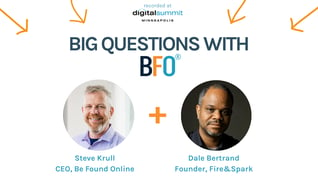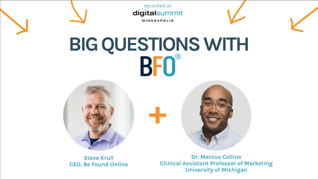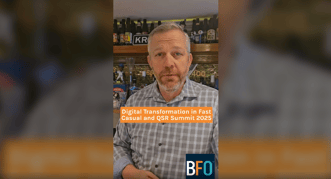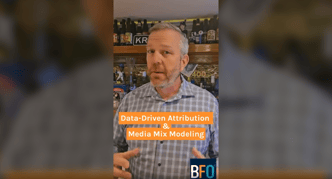Are Cookies Ruining Your Life? How Google Consent Mode Can Help Save Your Conversions
January 26, 2024
7 Minute Read
Last year, businesses world-wide began stepping up their efforts to become compliant with the many new privacy laws being passed. Google started 2024 by rolling out Tracking Protection to 1% of Chrome users, which restricted third-party cookies by default. This announcement came as a surprise to some. Google already twice delayed its deprecation of third-party cookies, originally supposed to take place in Q2 of 2022, and many thought it might happen again. However, this announcement was received as Google doubling down on their timeline, and recommitting to evolving towards the privacy-first web in 2024. At BFO, we’ve been working on this project through every step and change, helping our clients with compliance banner implementation, optimizing data with server-side tracking, and more.
With all our clients, our emphasis has been that it will be important to stay on top of many different privacy laws being passed at a state level in the US. While none of them are quite as strict as the European Union’s GDPR, we aim for our clients to be “future-proofed” and prepared to operate in a world where that is the case.
Chrome’s cookie deprecation isn’t the only privacy-minded change Google has made recently. It was also shared that, starting in March 2024, businesses using Google Ads in the European Union will be required to implement Consent Mode 2.0 in order to continue to create targeting groups for their campaigns.
In today’s post, we will provide you all the basics your business needs to know about Google Consent Mode. We will explain what it is, how it works, outline the differences between Basic and Advanced Consent Mode, tie it back to the legislature, and finally talk about how Consent Mode can make an impact for US business by saving their traffic and conversion data for users who opt out of tracking.
For this post, I’ll also keep the technical details to a minimum. If you’re interested in the dirty details of how this all works, please reach out to me at philly@befoundonline.com.
What Is Consent Mode?
Google Consent Mode is designed to help businesses by using additional signals to fill gaps in their data left by users who do not consent to having personal data or browser storage used for tracking. These signals are then used to model conversions for Google Ads, Floodlight, etc., as well as general behavior for Google Analytics 4.
Consent Mode is especially important for businesses operating in the European Union, where it will be required for anyone using Google’s advertising products. However, any business using a consent banner should implement Consent Mode to help connect the dots for missing conversions from users who have opted out of tracking.
How Does Google Consent Mode Work?
From a technical perspective, the crux of cookie compliance revolves around avoiding browser access to browser storage. Google Consent Mode prevents websites and applications from placing cookies with personal data or user identifiers, and instead analyzes other browser information such as what network requests are sent to interpret information about users anonymously. This information then goes through a modeling process with machine learning to fill in the gaps in information about website traffic and conversions.
Depending on whether your business implements Basic or Advanced Consent Mode, different consent types are used to signal to Google whether or not a user has opted in to tracking. For businesses using Google Tag Manager to manage their tracking, there are four total consent types: ad_storage, ad_user_data, ad_personalization, and analytics_storage. In order to implement any Consent Mode, businesses must begin by defining a default consent state (for example: denying analytics_storage and ads_storage for all new users). Then, based on a user’s consent preferences, GTM will adjust the behavior of its tags accordingly. For users who opt out of tracking, Consent Mode allows GTM to send anonymized data; when consent is given, the consent state is updated and requests with identifiers are sent as normal.
Basic & Advanced Consent Mode - What's the Difference?
The truth is, Consent Mode has existed since 2020, but previously made more sense with Google Marketing Platform products like Floodlight than it did with Google Analytics. Distilled down, basic consent mode is pretty straight-forward: your tags will only fire when a user gives consent. Basic Consent Mode has been available in Google Tag Manager for a few years, but until Advanced Consent Mode (aka Consent Mode 2.0) was introduced in November 2023, it really was not necessary for businesses properly using consent banners such as OneTrust for managing their user’s consent preferences. It simply was Google’s tool for managing what your banner probably already did.
An Advanced Consent Mode implementation loads Google tags before your cookie banner or pop-up is shown to the user. It sends hits to Google Analytics and Google Ads for all users who have declined consent. These hits have advanced anonymization applied and do not access browser storage, a pivotal requirement for compliance with all legislation worldwide. It functions without cookies and uses machine learning to fill in any missing data.
To sum it all up:
- No Consent Mode: Consent Mode is not implemented at all. Any data collected by Google products is presumed to be consented by the user.
- Basic Consent Mode: Consent Mode has been implemented, but data is collected only with the user’s permission.
- Advanced Consent Mode: Consent Mode has been implemented and data is collected from users regardless of consent.
Which mode you use will impact the quality of the modeling done by Google. Google’s own documentation states:
If you choose to implement consent mode by blocking Google tags until the consent dialog appears and users consent, you will not get the full benefits of consent mode. For example, you will not get modeled data in your GA4 property to fill in the gaps for the missing observed data when users decline consent. Whether you choose to block tags (basic implementation) or unblock tags (advanced implementation), Google tags adjust their behavior based on your users’ consent state.
I Fought The Law Before & It Didn't Go Great - How Is This Legal?
The decision that needs to be made is whether or not having modeled data is worthwhile enough to step into an ethical gray area by still collecting anonymized information about their users who do not consent to tracking.
At this point, I’ll remind you that I am not a lawyer or legal counsel and my attempts to fight the law have been met with mixed success, just like yours.
For businesses primarily conducting business outside the European Union, Consent Mode is a great solution for keeping your conversion data intact. For those operating within the EU, the rules of the GDPR place additional regulations on Consent Management Platform (CMP) functionality, language, and integration with Consent Mode in order to remain compliant.
Consent Mode only collects this anonymized data for Google products, so if you choose to integrate Consent Mode in GTM be careful how you configure other tracking for platforms such as Meta, Bing, Pinterest, TikTok, etc. It is your organization’s responsibility to stay compliant with all regional privacy laws.
At the start of this post, I stated that businesses using Google products in the European Union will be required to implement Consent Mode 2.0 in order to continue to create targeting groups for their campaigns. If this is not completed, it remains to be seen what the impact will be. It is likely that audience building and remarketing capabilities will be severely affected, if not completely broken, for data collected from your digital properties.
This will still apply to clients operating primarily in North America and elsewhere who have a functional CMP placed on their websites and applications. For this reason, BFO strongly recommends integrating Basic Consent Mode as soon as possible. For most of our clients, we recommend Advanced Consent Mode, but ultimately that is an internal decision that must be made alongside legal counsel.
There's a Lot Going on, We Know.
Still confused? BFO is here for you! We’ve spent the time learning about the many privacy changes taking place and are dedicated to helping our clients make informed decisions about how they navigate them as they conduct their business online.
Please reach out to us, we’d love to hear from you.

Jon Phillips
Jon is the epitome of what we look for in a good analyst: he loves solving problems and he has a knack for catching things that others overlook. In addition to his problem-solving prowess, Jon loves exploration and experimentation within his major hobbies of music, cooking and travel. He is a curious guy and his passion drives him to succeed in what he sets his mind to.
CATEGORIES
SUBSCRIBE TO OUR BLOG
Stay up to date with the latest industry best practices in digital marketing!























.png?width=339&height=179&name=Webinar%20Banner%20(1).png)



.png?width=339&height=179&name=July%20Webinar%20(Newsletter).png)

.png?width=339&height=179&name=Webinar%20Banner-April-02%20(1).png)
%20(4).png?width=339&height=179&name=Webinar%20Banner-May-02%20(1)%20(4).png)




.png?width=339&height=179&name=March%202023%20Webinar%20Ad%20(autoresponder).png)






























































